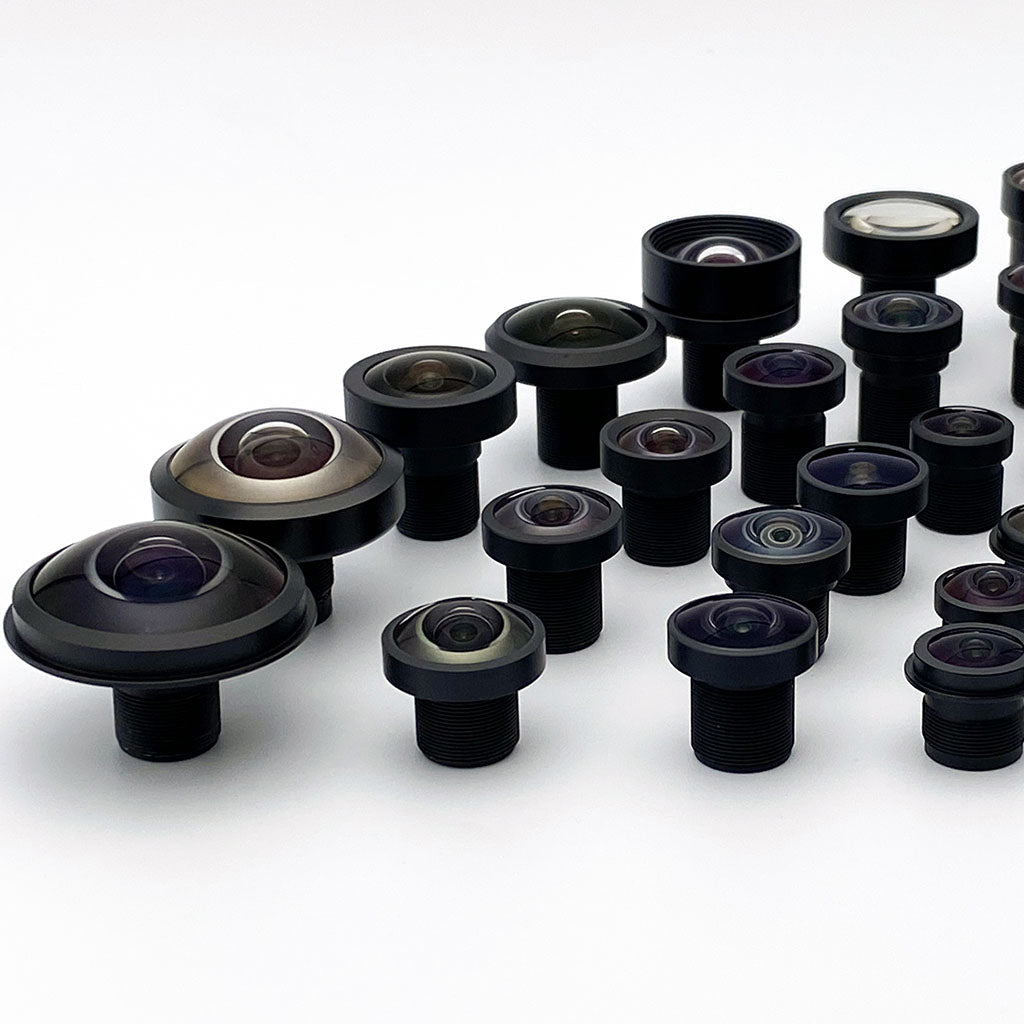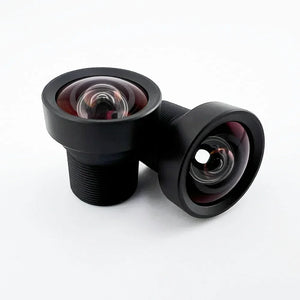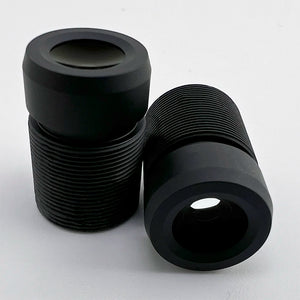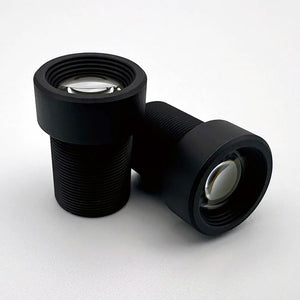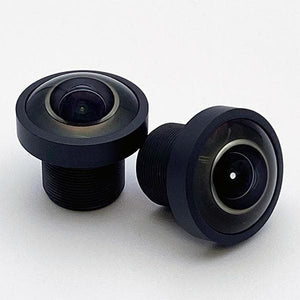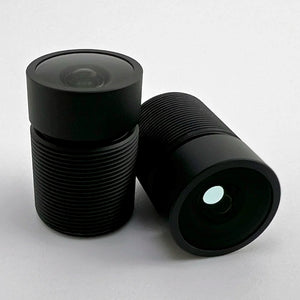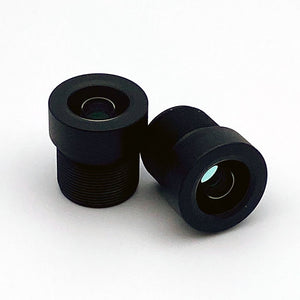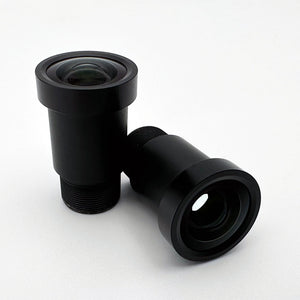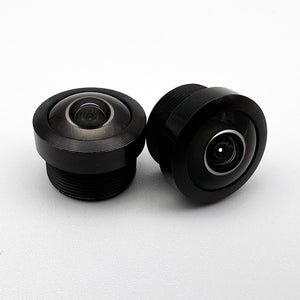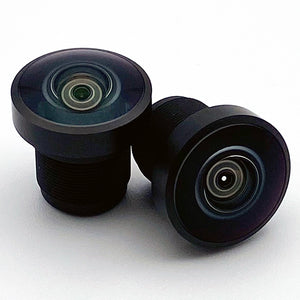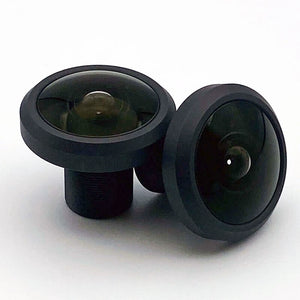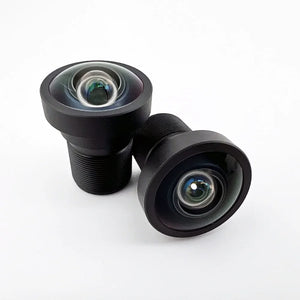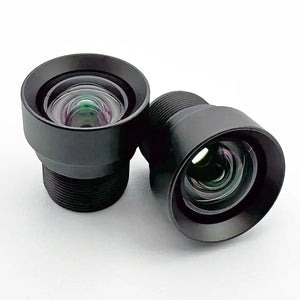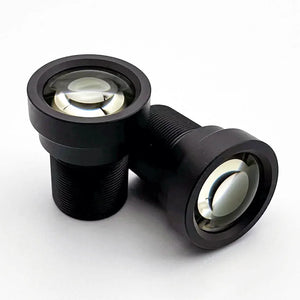M12 Mount Lenses for Machine Vision Systems
M12 lenses (also known as S-mount or board mount lenses) are miniature threaded optics designed specifically for embedded cameras and computer vision applications. These compact lenses feature the standard M12 x 0.5mm thread pitch and have become the industry standard for applications in robotics, drones, and security cameras where space and weight constraints are critical. Despite their miniature size, modern M12 lenses deliver exceptional optical quality that rivals larger C-mount alternatives while reducing system volume by up to 80%.
Our comprehensive inventory includes fisheye, wide-angle, and telephoto M12 lenses that support various sensor formats from 1/6" to 1/1.6" with resolutions reaching up to 20 megapixels. With over 200 distinct miniature lens models in stock, we provide same-day shipping on sample quantities along with downloadable .STP files and detailed optical specifications for your design validation process.
When you need custom M12 optics beyond our standard catalog, our US-based engineering team provides comprehensive support from initial optical design through volume production. Our quality management systems ensure consistent performance across production batches, while our California facility enables same-day sample shipping with volume orders up to 10,000 units typically shipping within 1-3 business days.
How to Select the Right S-Mount Lens for Your Application
Selecting the optimal M12 lens requires a thorough understanding of the key optical principles that govern imaging system performance. Each optical parameter not only affects image quality but also influences overall system cost, physical size, and design complexity.
Field of View and Focal Length Considerations
- Field of View (FOV) Requirements The field of view determines how much of your scene the M12 lens captures. Shorter focal lengths provide the wider coverage essential for situational awareness in mobile robotics, while longer focal lengths enable the detail extraction needed for precision inspection tasks. The inherent trade-off is that wide-angle M12 lenses introduce barrel distortion requiring computational correction, whereas telephoto S-mount lenses compress perspective while maintaining superior geometric accuracy. Our FOV Calculator helps you model exact coverage including distortion effects for your specific application.
- Depth of Field (DOF) Optimization Depth of field determines the axial distance range that appears acceptably sharp in your image. Larger f-numbers increase depth of field but reduce light throughput, which becomes critical for board cameras operating in varying illumination conditions. The engineering benefit of extended DOF is that it eliminates refocus requirements in fixed-working-distance applications, while shallow DOF enables optical sectioning techniques for 3D reconstruction. Use our DOF Calculator to optimize these parameters considering your specific pixel pitch constraints.
- Sensor Format Compatibility Your M12 lens must project an image circle that exceeds your sensor diagonal to prevent vignetting, but oversizing the lens wastes optical potential and increases aberrations at the sensor periphery. The key insight is that matching M12 lens and sensor formats optimizes MTF performance across the entire field while minimizing both size and cost. Using a 1/2.3" optimized S-mount lens on a 1/3" sensor underutilizes the optical design, while undersizing causes unacceptable dark corners. Our Focal Length Calculator helps determine the optimal focal length for your specific sensor format.
Optical Performance Specifications
- Resolution and MTF Performance The Modulation Transfer Function quantifies contrast preservation at different spatial frequencies, directly impacting perceived image sharpness. Your M12 lens MTF at the green Nyquist frequency should exceed 20% for adequate performance. The practical implication is that an M12 lens with poor MTF performance wastes your sensor's resolution capability, while over-specifying MTF increases cost without measurable benefit when limited by pixel size. Carefully match your board lens MTF specifications to sensor capabilities for optimal system performance.
- F-Number and Light Collection The f-number determines light-gathering capability following the inverse square law of illumination. Lower f-numbers (F1.4-F2.0) maximize signal-to-noise ratio in low-light conditions but increase optical aberrations and reduce depth of field. The engineering trade-off is that fast M12 lenses enable shorter exposure times that reduce motion blur, while smaller apertures improve edge sharpness through aberration reduction. Consider your specific illumination constraints and dynamic range requirements when selecting S-mount aperture specifications.
- Chief Ray Angle (CRA) Matching Modern CMOS sensors utilize microlenses to direct light into photodiodes, with these microlenses optimized for specific incident angles. CRA mismatch between your M12 lens and sensor causes wavelength-dependent vignetting (color shading) as off-axis rays miss the photodiode, creating the characteristic pink-green corner tinting. The critical specification is to maintain CRA matching within ±5-7° to prevent this color shading that's extremely difficult to correct in post-processing.
Environmental and Mechanical Factors
- Ingress Protection Requirements IP67-rated M12 lenses eliminate the need for protective windows that would otherwise introduce unwanted reflections, reduce light transmission, and add system cost. The optical advantage of removing these air-glass interfaces is improved contrast through reduction of stray light, while sealed board mount lenses also maintain consistent performance despite temperature cycling by preventing moisture ingress that causes internal fogging. Always specify IP-rated S-mount lenses for any outdoor applications.
- Thermal Stability Considerations All-glass M12 lenses maintain focus stability across -40°C to +85°C through low CTE materials and athermalized optical designs, while hybrid glass-plastic S-mount lenses reduce cost but exhibit focus shift with temperature due to plastic's high thermal expansion coefficient and refractive index temperature dependence (dn/dT). The design consideration is to specify all-glass construction for outdoor board cameras experiencing significant temperature swings, while controlled indoor environments allow cost-optimized hybrid designs.
